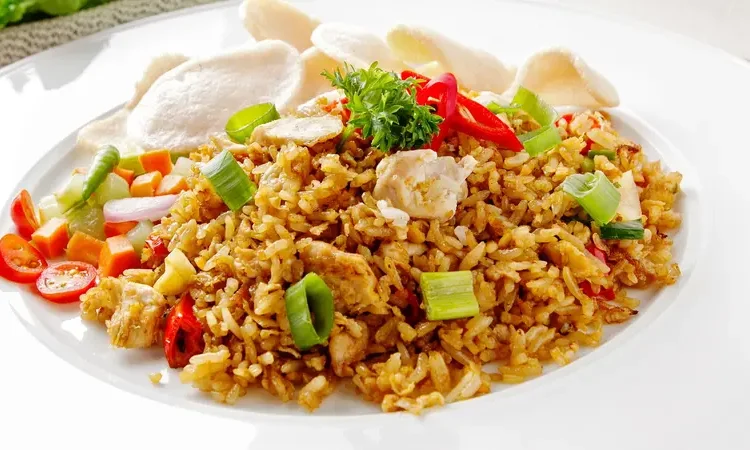Nasi goreng is a popular Indonesian rice dish that is typically fried with eggs, vegetables, and meat. It is a versatile dish that can be made with a variety of ingredients, and it is often served as a breakfast, lunch, or dinner.
Nasi goreng is believed to have originated in the Indonesian archipelago centuries ago. It is a common street food in Indonesia, and it is also often served in restaurants and homes.
Ingredients
The ingredients for nasi goreng can vary depending on the region and the cook’s preference. However, the basic ingredients for nasi goreng typically include:
- Cooked rice
- Eggs
- Vegetables, such as onion, garlic, carrots, green beans, or peas
- Meat, such as chicken, beef, or shrimp
- Spices, such as soy sauce, kecap manis (sweet soy sauce), chili powder, and salt
How to Make Nasi Goreng
To make nasi goreng, simply heat some oil in a pan and cook the eggs until they are cooked through. Remove the eggs from the pan and set them aside.
In the same pan, cook the vegetables and meat until they are cooked through. Add the cooked rice and spices and stir fry until the rice is heated through.
Finally, add the eggs back to the pan and stir fry until everything is combined.
Variations
Nasi goreng can be made with a variety of variations. Here are a few ideas:
- Add seafood: Shrimp, squid, or crab are all popular additions to nasi goreng.
- Add tofu or tempeh: Vegetarians and vegans can enjoy nasi goreng with tofu or tempeh.
- Add different vegetables: Try using different vegetables, such as broccoli, cauliflower, or eggplant.
- Add different spices: Experiment with different spices, such as turmeric, coriander, or cumin.
Nasi Goreng as a Cultural Symbol
Nasi goreng is more than just a delicious meal. It is also a cultural symbol of Indonesia. Nasi goreng is a common sight on Indonesian streets, and it is often served at special occasions, such as weddings and holidays.
Nasi goreng is a reminder of Indonesia’s rich and diverse culture. It is a dish that is enjoyed by people of all ages and backgrounds.
